A cloak, helmet and cape befitting royalty are on display in the Kaua‘i Museum on Rice Street.
They are made of feathers denoting status and heritage, yet are capable of deflecting spears in combat. They were the result of countless hours of labor and were frequently gifted to European visitors. And they hold a special place in the heart of Chucky Boy Chock, the museum’s executive director.
“The feathers were for the highest of nobility … they were treated god-like,” Chock said Friday.
The director had immediately selected the raiment on display in the museum’s main hall, when The Garden Island invited him to highlight his favorite exhibit for Hawaiian History Month. But the origin of the feathered garments starts outside the museum, beside a small tree near the building’s southeast corner.
The tree, called papala kepau, is easy to overlook. It must be touched to be appreciated. Its fruit is extremely sticky.
“That’s our glue,” Chock explained. “The birds, they love this, so they attach themselves to it, and then they can’t escape.”
Use of the papala kepau was a common method for snaring mountaintop birds whose feathers were needed to decorate regalia in a land without precious stones.
“That’s where the special birds were. They literally would live there and wait for the birds to come,” Chock explained. “They’d come and pluck their feathers during molting season, so the birds would survive.”
Ancient bird-catchers’ prizes included the mamo, ‘o‘o and ‘i‘iwi. They would unstick these birds using kukui nut oil as a solvent, having plucked what they needed. The animals would then fly away, free to grow new plumage for harvest in the years to come.
Birds still possess an imprudent love of papala kepau fruit. Museum staff occasionally have to free small birds caught in their tree’s branches.
“We just had one two days ago. A little mejiro,” Chock said.
Back inside the museum, Chock resumed the story of the cloak, helmet and cape. The first two items are replicas of items worn by the last ruling chief of Kaua‘i and Ni‘ihau, Kaumuali‘i, made in 2015 by master feather-worker Rick San Nicolas.
The cloak, or ‘ahu‘ula, contains 250,000 hand-plucked feathers fashioned into black-and-yellow crescents on a scarlet field. The crested helmet, just as impressive, is made of 10,000 feathers.
The garments’ red coloring represents the wearer’s royal bloodline. The yellow represents nobility. When worn in battle, the strong netting behind the feathers, made of olona fibers, warded off traditional Hawaiian weapons.
One might assume the replicas were created because the originals were lost somewhere in history. One would be wrong, because Kaumuali‘i’s cloak still exists, on an island in another ocean.
“(It) sits today in the British Museum,” Chock said. “We want it back. Someday, we will get it.”
This is not uncommon. Many Hawaiian cloaks and capes are locked away in European museums and private collections, according to the director.
“When Captain (James) Cook gave our king his shirt or a couple of nails, the king gave him a cloak, because we didn’t have any money,” he explained. “These were our most treasured things, were the cloaks.
“Captain Cook went back all over Europe and he sold it,” he continued. “He sold all the treasured cloaks and helmets he had. He had lots, not only from our island, from all the different kings.”
At least one cloak — actually a short cape, or ‘ahu — has been returned to Kaua‘i. It is framed on the museum wall opposite Kaumuali‘i’s recreated regalia.
Chock brightened when he told the story of the Sloggett Feather Cape, named for its initial recipient, English surgeon W.H. Sloggett.
“It’s a really, really beautiful story,” he said. “There was this surgeon general from London … King Kamehameha the Fourth needed medical attention, so Dr. Sloggett mended him.”
Sloggett refused payment for his treatment of the king, who ultimately presented the doctor with his own cape. Years later, a descendant of Sloggett’s returned the royal gift.
The final cloak shown by Chock is worn by King Kamehameha the First, in a painting hung from the museum’s gallery. It is all yellow in color.
“It took generations to make it because they had to collect half a million yellow feathers,” Chock said, noting a prophecy claimed that only when the yellow cloak was completed would the baby fated to become King Kamehameha the First be born.
•••
Scott Yunker, general assignment reporter, can be reached at 245-0437 or syunker@thegardenisland.com.


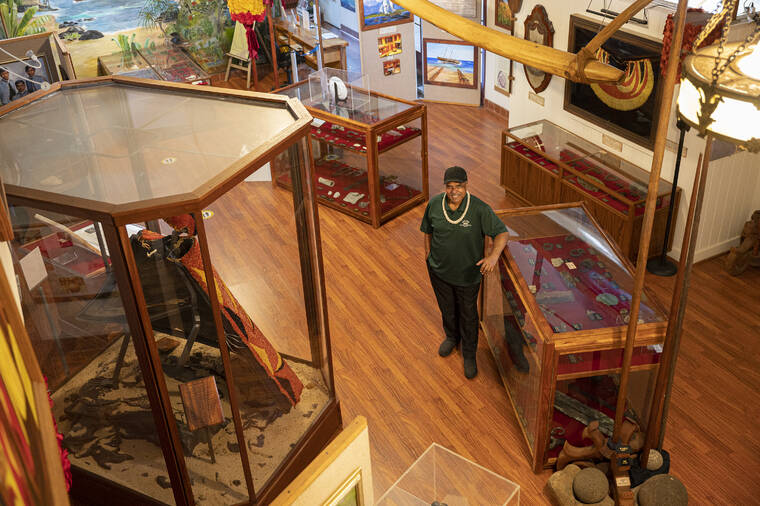
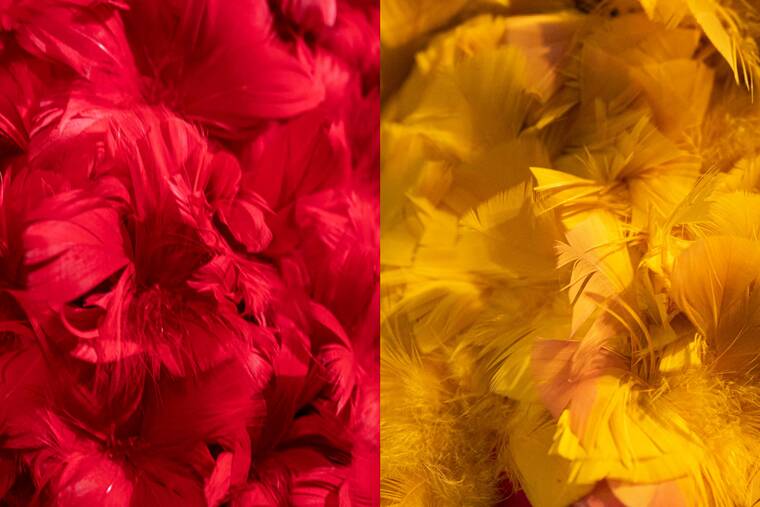
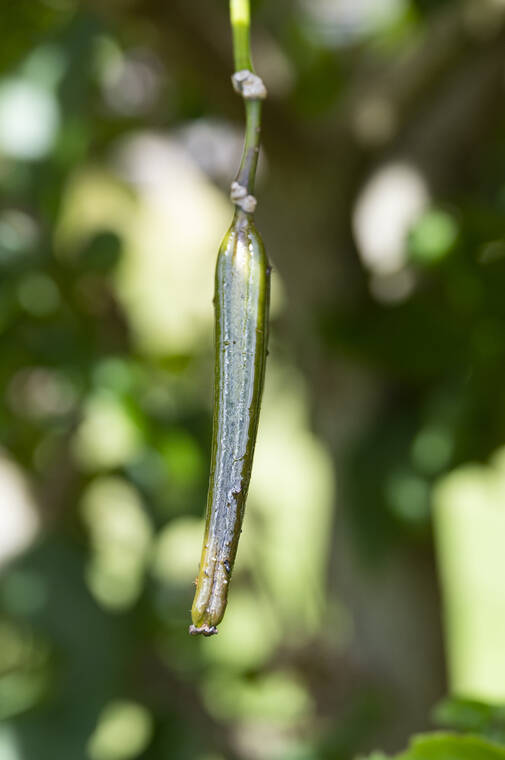
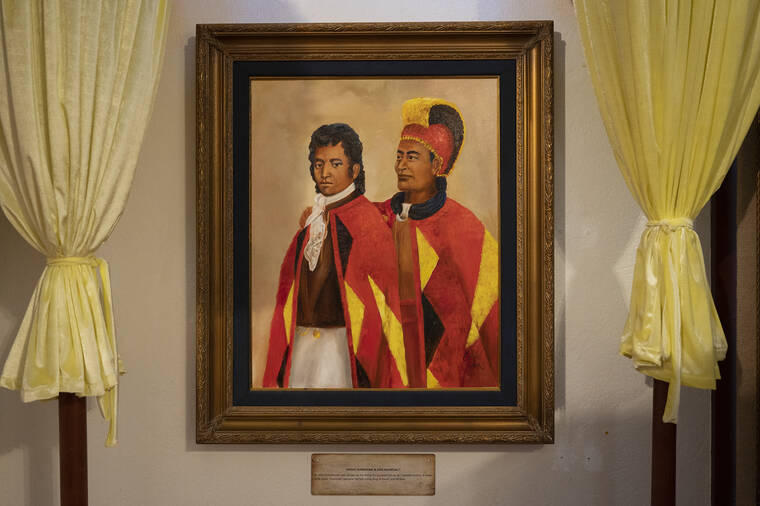
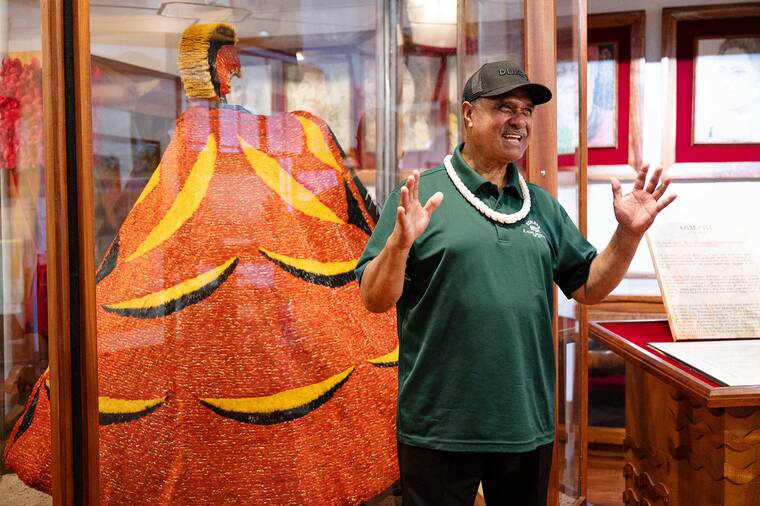
Wow! Thanks for sharing such a wonderful heritage of the Hawaiian people and kingdom. God willing all of your artifacts will rightfully be returned. Best wishes.